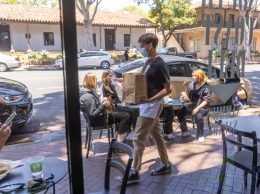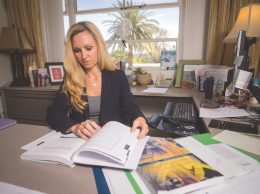Reports that a resident of Santa Clara County died of COVID-19 in early February sent me scrambling back to the weekly diary I’ve been keeping about life at the Business Times for the past 20 years.
My barely legible notes, plus a few emails, make it clear that sometime around the Martin Luther King Day holiday on Jan. 20, a virus of unknown origin swept through the Business Times newsroom.
It was a noteworthy event for me for two reasons. First, I don’t ever get sick. Second, I’d had a flu shot as a precaution.
The illness hit hard and there were a lot of the familiar symptoms. Cough, shortness of breath, lack of energy. I remember walking into the newsroom after lunch one day and saying I was going home because I couldn’t keep my head up.
My taste for coffee disappeared and I switched to tea. After a few false starts I began to feel better and by early February I was well enough to drive to Palm Springs for a winter break with my wife and our dog. I never saw a doctor.
At least five of us in the newsroom were stricken with the bug and for a few weeks we practiced an informal separation from the advertising team. That was late January, so concepts like social distancing and mask wearing were not yet on the horizon.
By late February, of course, coronavirus was spreading across the U.S. The earliest warnings about the need for social distancing came in early March from Ventura County’s health department. By March 12, professional sports events were shutting down, Gov. Newsom banned large events and the Business Times bit the bullet and postponed our Central Coast Innovation Awards.
To date, the only COVID-19 testing linked to the Business Times staff was for the spouse of one of our employees last week. It turned out negative for active coronavirus, but did not test for the presence of antibodies to determine if she had already recovered.
Our team is working remotely from Denver, Seattle, Ojai, Lompoc, Ventura, Santa Barbara and, at times, Los Angeles. We don’t know if we have immunities that might be beneficial if a second wave hits — or if we are at risk of getting sick and spreading the disease once we return to our office on East Carrillo Street.
The bottom line is that we survived whatever struck us in late January and we’re all tired of working from home and not having face-to-face contact. An easy and widely-available testing regime would make it a lot easier to reopen our office and get back to work.
SILVER LINING
Up until the coronavirus hit, many of the essential economic attributes of the Central Coast looked like disadvantages. Millennials were flocking to large cities, living in dense environments and valuing high levels of social contact.
Suburban communities, single-family homes and smaller cities that didn’t have clusters of high-tech jobs were decidedly out of favor. But COVID-19 may have changed the dynamics for Southern California.
Smaller communities, single-family homes and less dense environments may come back into favor. So may communities with lots of parks and open space.
I don’t want to minimize the damage that’s been done to our restaurant, retail and hotel sectors and specialized industries such as flower growing.
But the Central Coast has many of the newly desirable attributes. It does have one big drawback, which is lack of workforce housing. But if it can find the will to build more housing, the Central Coast could be in the catbird seat when it comes to economic recovery.
• Contact Editor Henry Dubroff at hdubroff@pacbiztimes.com.






 Print
Print Email
Email

















